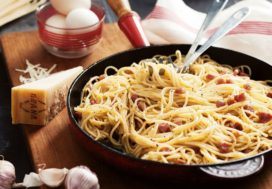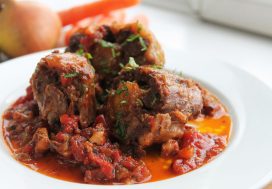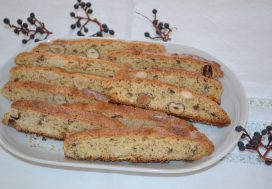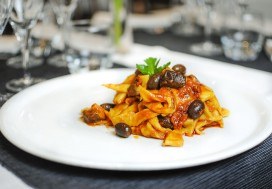During your stay at Tenuta di Santa Lucia, situated in Soriano nel Cimino, in Viterbo district, in Lazio, you can taste the strong flavors and the typical dishes of Lazio.
Raviolacci Porcini e Tartufi
This Lazio traditional recipe has a real flavor of autumn, the Raviolacci con Porcini e Tartufi are a gastronomic specialty. The basis of raviolacci is realized with fresh egg pasta, while the stuffing consists in thinly-chopped fresh porcini mushrooms, lightly fried with garlic, white wine and fresh ricotta. Once boiled the ravioli can be seasoned with just butter and sage and a sprinkling of white truffle. Another possible combination with the ravioli is walnut sauce, prepared with oil, garlic, salt and pepper, all blended and poured on the pasta, finishing up with some truffle shavings. A prelibate and succulent first course!

Bigoli all’amatriciana
Bigoli all’Amatriciana
The pasta all’amatriciana is popular worldwide, and the bigoli all’amatriciana are a original recipe from Lazio, a good representation of the gastronomic creativity of this region. The recipe was created at Amatrice, in province of Rieti, where it was most commonly called Matriciana. It was the dish of the pastors that lived on the mountains, and it was prepared with pecorino, pasta, jowl and lard. Nowadays there’s many variants, but the real Matriciana requires Amatrice’s jowl, an essential ingredient that gives a delicate taste to the dish. The jowl is thinly sliced and lightly fried in a pan with chili and a spoon of lard, adding tomato sauce and spaghetti, then the pecorino of Amatrice is slowly added. The process isn’t easy, but here in Lazio you’ll get to taste a perfect one!
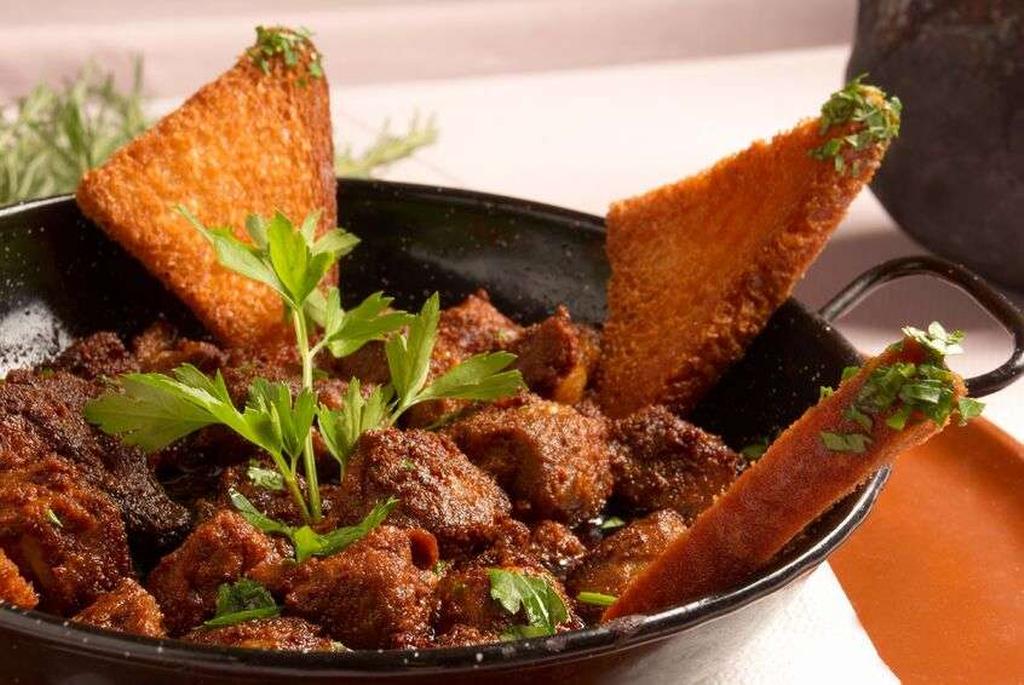
Stufato di Cinghiale foto voglia-di
Stufato di Cinghiale
The Stufato di cinghiale is a second course with an intense taste, cooked according to a traditional and popular recipe that fit well in winter days. To prepare a stew you need some really good wild boar meat, of course, a wild animal common in this area. The chopped meat is left an entire night in red wine, carrots, onion and celery, just to make sure it gets soft and easily digestible. The next day the meat is cooked in a pan with more carrots, onion and celery, then some water is poured in and the meat cooks for about three hours, until it’s soft. At the end of the cooking you’ll taste an incredible dish, very prelibat and tasty. The sauce obtained with the stew is a delicious sauce for a pasta, all of this accompanied with a nice red wine.



